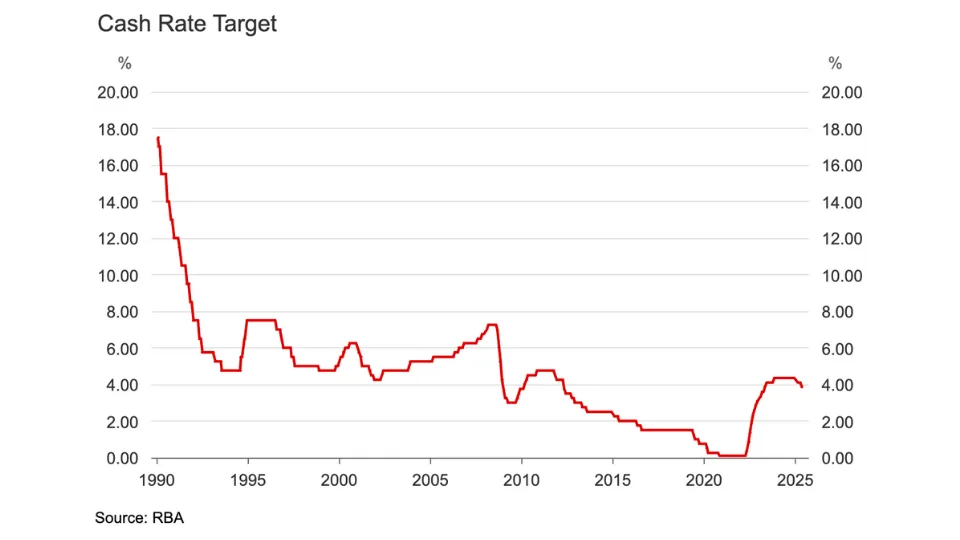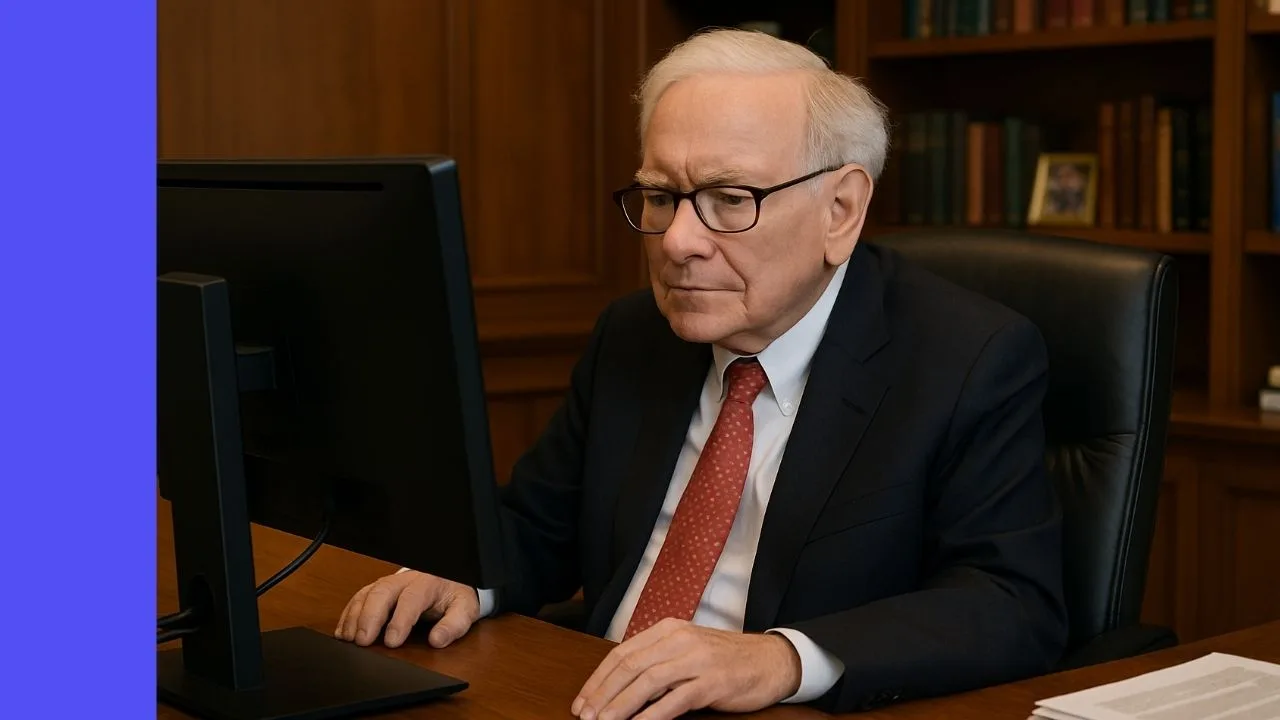How do Aussies invest on the New York Stock Exchange (NYSE)? Or buy shares of companies like Visa Inc (NYSE: V) or Nike Inc (NYSE: NKE)?
The NYSE stands as one of the world’s biggest and most influential stock markets, with a rich history of linking investors to companies and shaping global financial trends.
You’ve probably heard of “Wall Street”. At the heart of it? The New York Stock Exchange (NYSE) — the biggest and most powerful stock exchange in the world. This global powerhouse has shaped financial markets for centuries and still drives some of the biggest moves on the planet today.
If you’re used to trading on the Australian Securities Exchange (ASX), the NYSE might feel like a world away. But here’s the thing — understanding the NYSE can help Aussie investors tap into global trends, discover fresh opportunities, and diversify beyond the Aussie market.
In this guide, we’ll break down exactly what the NYSE is, how it works, and how you (yes, from right here in Australia) can start investing in some of the world’s biggest companies. Let’s dive in.
An explainer on the New York Stock Exchange
The New York Stock Exchange (NYSE) is the world’s most iconic stock exchange. It’s where investors buy and sell shares in some of the planet’s biggest companies. And if you’re looking to diversify beyond the ASX, this is one global market you’ll want to know about.
A short history lesson on the NYSE
The NYSE got its start way back in 1792 when a group of 24 stockbrokers signed the Buttonwood Agreement under a Buttonwood tree on Wall Street. From those humble beginnings, the NYSE grew into the global powerhouse it is today.
Some key moments:
- 1867: The ticker tape machine transformed market communications (pre-Twitter days).
- 1929 & 1987: Survived two of the biggest market crashes in history.
- Today: Most trading happens electronically, but the old-school trading floor still buzzes on Wall Street.
Why is the NYSE such a big deal?
The financial sector views the New York Stock Exchange as significant for several reasons:
- It’s one of the largest stock exchanges in the world. This means it currently hosts many of the biggest and most influential companies. Investors from around the globe trade shares on the NYSE, making it a key player in global finance.
- It sets high standards for the companies it lists. Companies must meet strict requirements to be listed, ensuring they are credible and financially sound. This helps protect investors and maintain trust in the market.
- It plays a crucial role in price discovery as prices of stocks on the platform are determined by supply and demand. This process helps ensure stock prices reflect their true value.
- It has a significant impact on the global economy. The performance of the NYSE often influences other markets worldwide. Understanding trends on the NYSE can offer insights into global market movements.
- The NYSE also offers opportunities for diversification. By investing in companies listed on the NYSE, you can spread your investments across different industries and regions. This can help reduce risk and improve potential returns. However, like with any stock exchange, investing on the NYSE always carries risk.
So how does the NYSE work?
Here’s how the NYSE works as a marketplace for buying and selling shares of publicly listed companies.
Primary functions
The NYSE has three main functions:
- Facilitating trading – it brings together buyers and sellers, making it easier for them to trade shares.
- Providing market information – it also aims to provide up-to-date information on stock prices and market activity, helping investors make educated investment decisions.
- Ensuring a fair trading environment – it enforces rules with the intention of maintaining a fair and transparent market.
Structure and operations
The NYSE operates both a physical trading floor and electronic trading platforms. The trading floor, located on Wall Street in New York City, is where brokers and specialists match buy and sell orders. While the trading floor is iconic, most trading now happens electronically, allowing faster and more efficient transactions.
Brokers and traders play key roles in the NYSE’s operations. Brokers act as intermediaries between buyers and sellers, while traders execute buy and sell orders. Market makers and specialists help ensure liquidity by being ready to buy or sell shares at publicly quoted prices.
Listing companies
For listing on the NYSE, a company must meet strict requirements. The listing process involves several steps:
- Meet initial requirements
- A company must first meet the NYSE’s initial listing criteria. These include having a certain level of earnings, market value, and number of publicly traded shares. This aims to ensure the company is financially sound and ready for public trading.
- Submit an application
- The company must submit a listing application to the NYSE. This application includes detailed information about the company’s financials, business operations, and management team. The NYSE uses this information to assess whether the company is suitable for listing.
- Undergo a review
- The NYSE conducts a thorough review of the application. This involves checking the company’s financial health, compliance with regulations, and overall readiness for listing. The review process intends to ensure that only companies meeting high standards are listed.
- Prepare for an Initial Public Offering (IPO)
- If the company isn’t already public, it will need to prepare for an IPO. This involves working with underwriters to set the share price and generate investor interest. The company must also file necessary documents with regulatory bodies.
- Comply with ongoing requirements
- Once listed, the company must meet ongoing NYSE requirements. This includes regular financial reporting, maintaining a minimum share price, and sticking to corporate governance standards. These requirements help keep market integrity and protect investors.
Popular NYSE stocks
The NYSE is home to many of the world’s largest and most influential companies. These companies span various industries, from technology and healthcare to finance and consumer goods. Here are some major companies listed on the NYSE:
- ExxonMobil (XOM) – one of the largest oil and gas companies in the world.
- Johnson & Johnson (NYSE: JNJ) – a multinational corporation known for Band-Aid and Tylenol.
- JPMorgan Chase & Co. (NYSE: JPM) – a global financial services firm.
- Procter & Gamble (PG) – a leading consumer goods company behind Tide, Pampers, and Gillette.
- Walmart Inc. (NYSE: WMT) – the world’s largest retailer.
- The Coca-Cola Company (NYSE: KO) – a beverage giant best known for Coca-Cola.
- Visa Inc. (V) – a global payments technology company.
- Pfizer Inc. (PFE) – a major pharmaceutical company.
- The Walt Disney Company (NYSE: DIS) – a diversified entertainment conglomerate.
NYSE, NASDAQ, ASX – what’s the diff?
The New York Stock Exchange stands out among global stock exchanges due to its size, history, and influence. Here’s a comparison:
| Feature | NYSE | NASDAQ | ASX |
|---|---|---|---|
| Location | New York City, USA | New York City, USA | Sydney, Australia |
| Trading system | Hybrid (floor + electronic) | Fully electronic | Fully electronic |
| Listing requirements | Stricter financial/governance rules | Generally less stringent | Varies by category |
| Market type | Auction market | Dealer market | Auction market |
| Notable companies | Apple, ExxonMobil, JPMorgan Chase | Microsoft, Amazon, Facebook | BHP, Commonwealth Bank, CSL |
| Market capitalisation | Highest overall | Tech and growth focused | Asia-Pacific major player |
| IPO process | Traditional IPO | Direct listings & IPOs | Traditional IPO |
| Index examples | Dow Jones, S&P 500 | NASDAQ-100 | ASX 200 |
Understanding these distinctions can help guide your investment decisions.
How to invest on the NYSE from Australia
When investing from Australia, here are the main options:
Direct investment in US shares
You can buy shares on the NYSE using an international brokerage account. Many Australian brokers, like Pearler, offer access.
Investing in indices
You can invest in indices like the S&P 500 and Dow Jones:
- S&P 500: 500 large companies listed on the NYSE and NASDAQ.
- Dow Jones: 30 key companies. Invest via ETFs that track the index.
Managed funds and ETFs
You can also invest in managed funds or ETFs focused on US stocks. Managed funds are actively managed; ETFs are usually passive.
Considerations
Be aware of currency risk and tax implications. You may need a W8-BEN form. Consider consulting a financial adviser.
Key takeaway
The NYSE plays a crucial role in global investing. Understanding it gives Australians access to broader opportunities.
To stay informed, follow financial news, track trends, and review your investment strategy regularly.
You don’t need to be on Wall Street to start investing in the world’s biggest companies. With Pearler, you can access the NYSE and build a diversified portfolio—all from right here in Australia!
- Buy US shares and ETFs
- Automate your investing strategy
- Keep it simple with transparent fees and easy tax reporting
Click here to start investing in US stocks with Pearler today.










